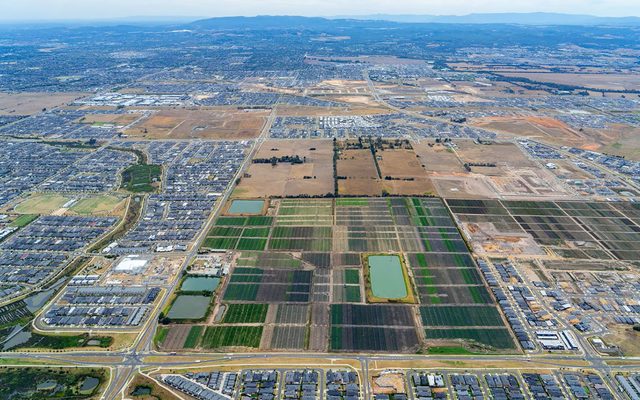This article is from the Australian Property Journal archive
LAND shortages may be at the heart of Australia’s housing crisis, after residential land transactions plummeted over the year.
According to the HIA-CoreLogic Residential Land Report, the volume of residential land transactions was down 37.2% in the 12 months to March 2023, which is set to see the volume of home commencement moderate over the coming year.
With available land limited, prices grew by 23% over the three years from March 2020 to March 2023. While in the three years prior to this period prices increased by just 5%.
“This land shortage continues to drive up prices despite the sharpest increase in interest rates in over 30 years and will weigh on home building activity in the coming years,” said Tom Devitt, senior economist at HIA.
“As the market begins to normalise from the shocks in recent years, it is expected that both sales and prices will return to their historical trend. This depends on the government’s ability to adequately plan its land release pipeline, which in turn depends on the availability of data across all stages of land release.”
Devitt noted that it takes an average of ten years to move land through the seven stages of land release, meaning decisions made today will impact housing supply through the next decade.
“The time it takes to progress from a vacant block of land to a block that is shovel-ready with titles could be a major roadblock to the government’s plan to build a million homes over the next five years” added Devitt.
For the first time since 2015, All capital cities recorded an increase in median lot price over the year to the March Quarter 2023.
Greater Sydney saw the smallest year on year rise, with the median lot price in the March Quarter 2023 up 0.5% on the March quarter 2022.
Though Sydney remained the most expensive of all capital cities, with median land prices of $1,827/sqm, with price growth continuing to outpace other capital cities.
While Greater Brisbane recorded the largest annual increase, up 9.4% from the March quarter 2022. Though land prices were down 1.7% on the previous quarter.
Greater Adelaide’s lot prices were up 7.4% annually by fell by 2.4% from the December quarter.
Greater Melbourne saw a 6.8% annual rise in median lot prices, though was down 1.0% from the December quarter.
Greater Perth was up 5.9% over the year, after a significant 11.3% increase on the December quarter.
Greater Hobart’s lot price was up 2.5% over the year to $307,500, and 1.7% compared to the December quarter.
“Although the rate tightening cycle has seen some capitals record mild declines in recent months, land prices overall have remained fairly resilient, thanks to the shortfall in available land supply,” said Kaytlin Ezzy, economist at CoreLogic.
“While sales numbers have eased significantly from the peak volumes seen during the HomeBuilder scheme, it will take some time before we see a more notable recovery in supply levels. Until then, we can expect land prices will remain elevated, dwelling approvals will continue to track below average, and house commencements will continue easing,”




